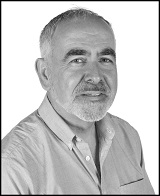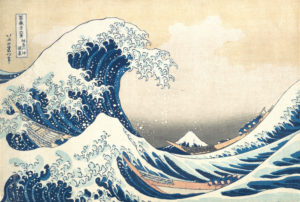 To those teaching and researching the medical humanities, major exhibitions of great art represent a wonderful opportunity for a focal illumination of how medicine and the arts interact. However, for those who live a long way from the great galleries, the excellence of the writing and insights in the many reviews—including those in medical journals—are counterpointed by the frustration created by the barriers of time, space, and finance to experiencing the event in person.
To those teaching and researching the medical humanities, major exhibitions of great art represent a wonderful opportunity for a focal illumination of how medicine and the arts interact. However, for those who live a long way from the great galleries, the excellence of the writing and insights in the many reviews—including those in medical journals—are counterpointed by the frustration created by the barriers of time, space, and finance to experiencing the event in person.
My clinical practice with stroke thrombolysis using telemedicine has been revelatory of how specialist services can be liberated from geographical constraints. Equally, we have pioneered interactive video seminars in medical humanities between the humanities hub and clinical sites in our university. This prompted me to ask whether new technologies can enhance the reach of major cultural activities with relevance to medicine to a global audience.
The current exhibition of Hokusai in the British Museum provided an opportunity to test the hypothesis, based on a new trend of broadcasting guided “personal” tours of exhibitions to cinemas throughout the world. In preparing health practitioners for an ageing world, the life and art of Hokusai is a striking example of not only the longevity dividend, but also of gerotranscendence, both key concepts in gerontology.
Active from the age of 6 to his 90th year, Hokusai’s output was prodigious and of an unwaveringly high standard. From the beginning he combined meticulous craftsmanship with an embrace of the personal, spiritual, and material. The artistic progression in his work undermines any myth of conservatism with increasing age, as his style became increasingly radical and innovative.
Hokusai is most closely associated in the popular imagination with the iconic The Great Wave off Kanagawa (pictured left), one of the 36 Views of Mount Fuji created at the age of 71. The subtitle of the exhibition, Beyond the Great Wave, reflects the curators’ desire to elevate our perspective to a fuller appreciation of an extraordinary life and oeuvre.
In so doing, we are guided through work of astonishing beauty and impact through a life of continued development, from the introduction of western landscape perspective to Japanese art in his work with the Dutch East India Company in his seventh decade to his sublime final works.
The three final painted scrolls on view are from his 90th year and represent an apotheosis, mirroring gerotranscendence—the shift from a materialistic and rational view of the world to a more cosmic and transcendent one, normally followed by an increase in life satisfaction. It is hard not to see a final adieu in the dragon ascending in a cloud of smoke over a pared-down Mount Fuji in the last work.
The cinematic experience was excellent, temporally close to the opening of the exhibition so as to share the buzz, and consisting of a compelling short documentary and then a guided tour of a selection of the art works with reflections by contemporary artists, curators, and art historians—all that was missing was a gerontologist!
While, just as with stroke telemedicine, something is lost in the gap between the virtual and the embodied experience, so too there is a gain in terms of insights, accessibility, and participation. I came away from this experience enriched and enlightened, and would happily recommend a future cinematic tour of the work of a great artist as a worthwhile focus for seminars in the medical humanities with a global reach.
Exhibition: Hokusai: Beyond the Great Wave; British Museum, London, England; 25 May – 13 August 2017
Movie: British Museum presents: Hokusai; director Patricia Wheatley; British Museum and NHK, 2017; distributed by MORE2SCREEN
Desmond O’Neill is a consultant geriatrician and co-chair of the Medical and Health Humanities Initiative of Trinity College Dublin.
Competing interests: I have read and understood BMJ policy on declaration of interests and declare the following interests: None.

